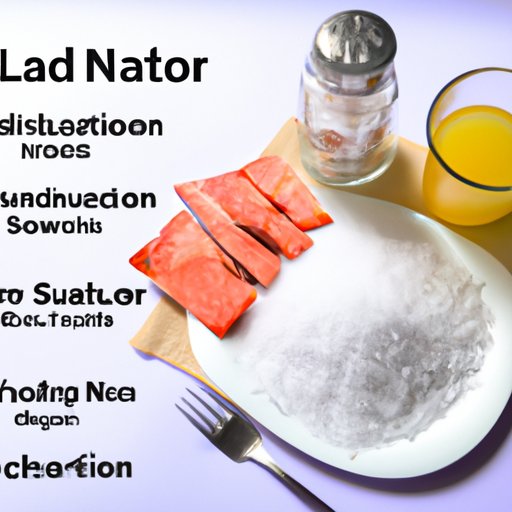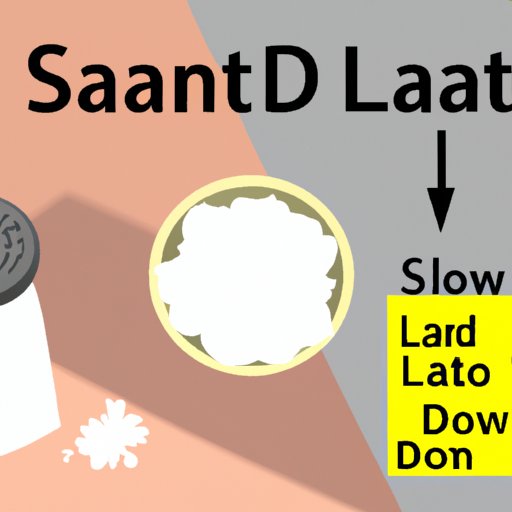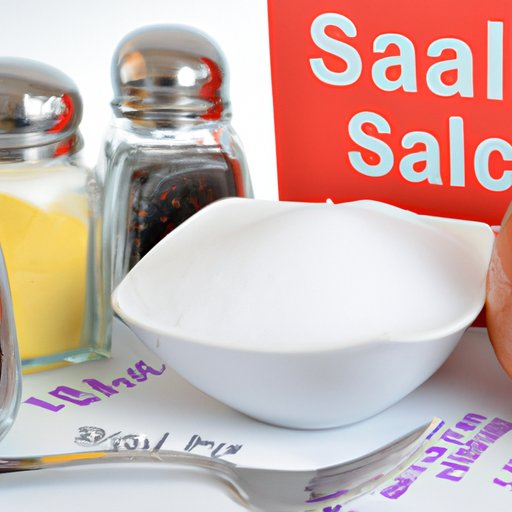Introduction
Sodium is an essential mineral that our bodies need to function properly. It helps regulate fluid balance, muscle contraction, and nerve transmission. However, consuming too much sodium can lead to serious health problems, such as high blood pressure, heart disease, and kidney damage. For this reason, many people choose to follow a low sodium diet. But what exactly is a low sodium diet, and how much sodium should one consume on such a diet?

An Overview of Sodium Intake on a Low Sodium Diet
A low sodium diet is one that restricts the amount of sodium consumed to less than 2,300 milligrams per day. This number is based on the American Heart Association’s recommendation for the general population, which is to consume no more than 2,300 milligrams of sodium per day. The AHA also recommends that certain individuals, such as those with hypertension, limit their sodium intake to 1,500 milligrams per day.

A Guide to Eating a Low Sodium Diet
To reduce sodium intake, it’s important to be aware of which foods contain high levels of sodium. Processed foods, such as canned soups, frozen dinners, and processed meats, typically contain high amounts of sodium. Other foods to avoid include: table salt, salted snacks, pickles, condiments, and fast food. On the other hand, fresh fruits and vegetables, whole grains, low-fat dairy, and lean proteins are all good sources of nutrients and have little to no sodium.
The Benefits of Reducing Sodium Intake
Reducing sodium intake has numerous health benefits. According to the CDC, “Reducing dietary sodium can lower blood pressure, and therefore, reduce the risk of stroke, heart attack, and heart failure.” Studies have also shown that reducing sodium intake can improve kidney function and reduce the risk of developing chronic kidney disease.
How to Monitor Sodium Intake on a Low Sodium Diet
It’s important to keep track of your sodium intake on a low sodium diet. One way to do this is to read food labels. Most packaged foods will list the amount of sodium per serving. You should also be aware of how much sodium is in restaurant meals. Many restaurants will provide nutritional information upon request.
Another way to monitor your sodium intake is to use a food tracking app or website. These tools can help you track the amount of sodium you’re consuming each day and make it easier to stay on track with your low sodium goals.

Understanding the Risks of Too Much Sodium in the Diet
Although sodium is an essential mineral, consuming too much can lead to serious health problems. High sodium intake can cause high blood pressure, which is a major risk factor for heart disease and stroke. Too much sodium can also lead to kidney problems, such as kidney stones and chronic kidney disease.
In addition, consuming too much sodium can increase the risk of developing certain types of cancer, such as stomach and colorectal cancer. Therefore, it’s important to be mindful of your sodium intake and adhere to the recommended limits.
Conclusion
Following a low sodium diet can help reduce the risk of serious health problems, such as heart disease, high blood pressure, and kidney disease. To get the most out of a low sodium diet, it’s important to understand how much sodium is considered low and to be mindful of the foods you eat. Reading food labels and using a food tracking app can help make it easier to monitor your sodium intake. By understanding the risks of too much sodium in the diet and following the recommended guidelines, you can reap the benefits of a low sodium diet.
(Note: Is this article not meeting your expectations? Do you have knowledge or insights to share? Unlock new opportunities and expand your reach by joining our authors team. Click Registration to join us and share your expertise with our readers.)
